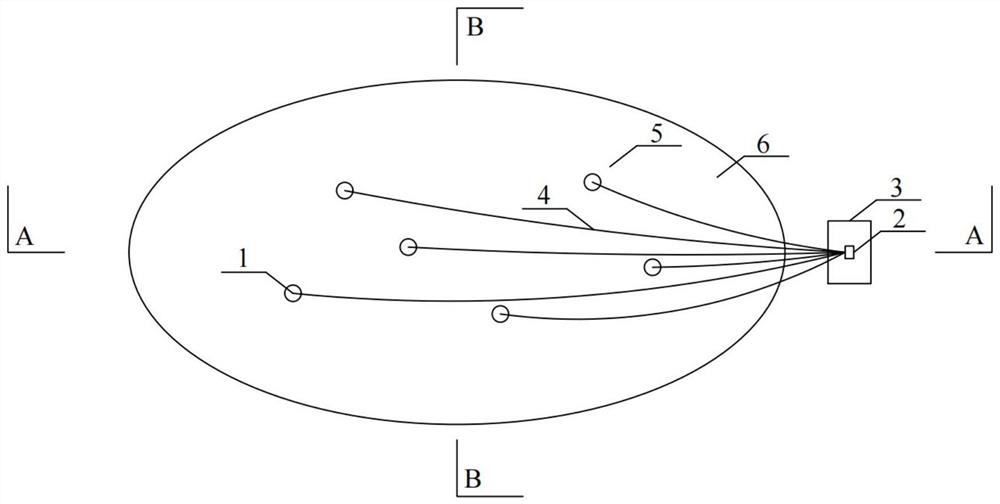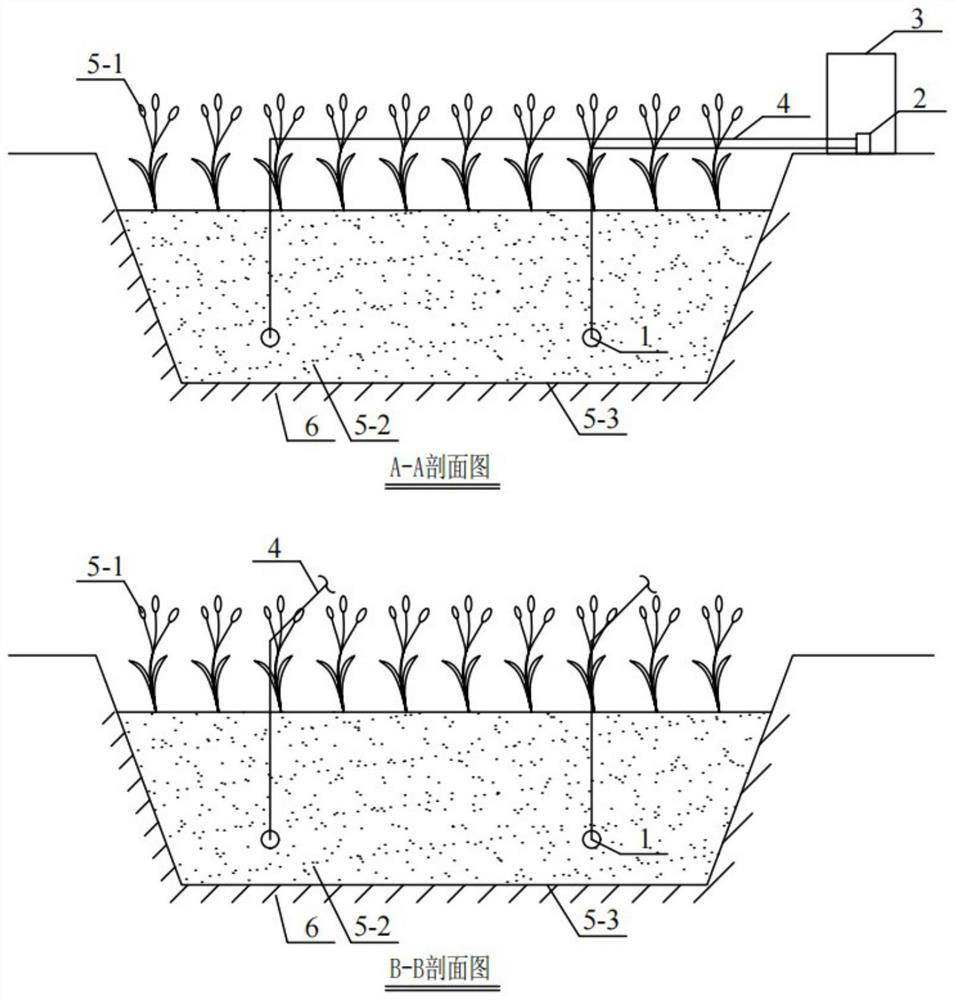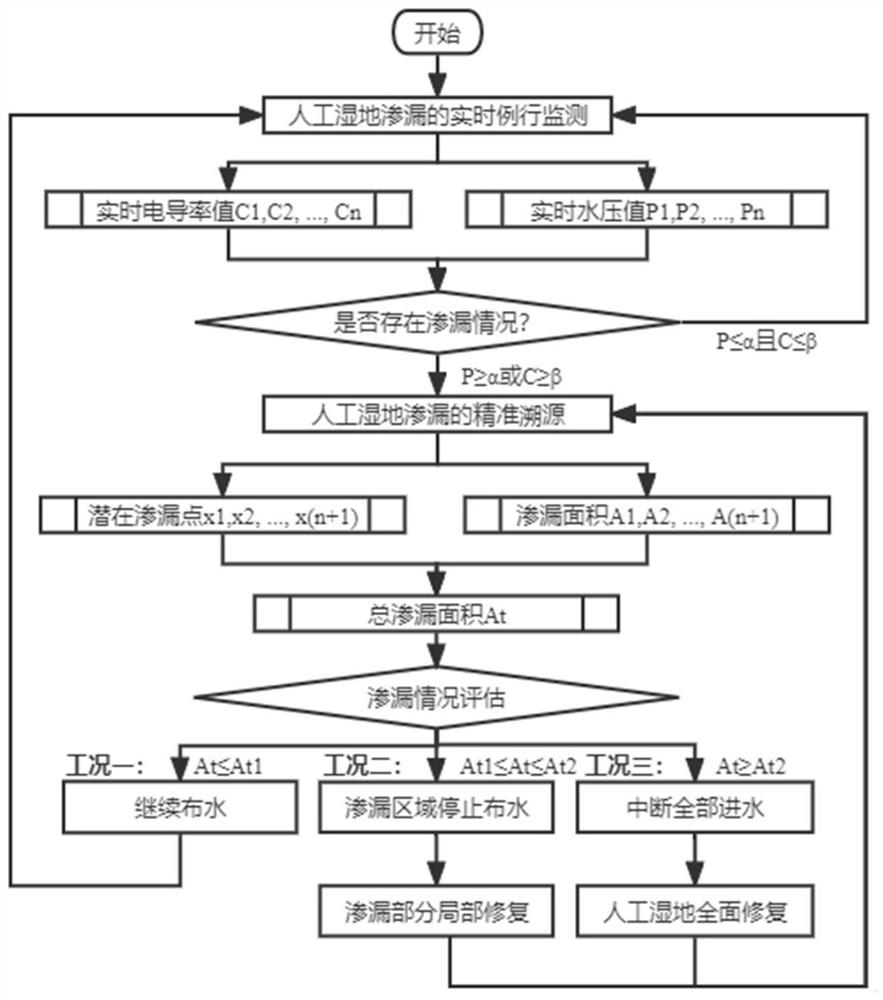Real-time monitoring, accurate tracing and in-situ repairing system and method for artificial wetland leakage
A constructed wetland and real-time monitoring technology, applied in chemical instruments and methods, complex mathematical operations, general water supply conservation, etc., can solve the problems of lack of intelligent judgment methods, long time-consuming traceability process, low accuracy, etc., to achieve intelligent management, Easy to operate, easy to implement, and low operating costs
- Summary
- Abstract
- Description
- Claims
- Application Information
AI Technical Summary
Problems solved by technology
Method used
Image
Examples
Embodiment 1
[0136] This example will be as figure 1 The system shown is applied to a constructed wetland with long side length a=80m and short side length b=30m for routine real-time monitoring. The system mainly includes a mobile leak detection device 1, a data terminal 2 and a server 3; each mobile leak detection device 1 is connected to the data terminal 2 through a cable 4, and the data terminal 2 is used to receive various detection data and upload various detection data. to server 3. like figure 2 As shown, the constructed wetland 5 is mainly composed of a wetland plant 5-1, a wetland filler 5-2 and an impermeable membrane 5-3, and the impermeable membrane 5-3 is used to separate the wetland filler 5-2 from the lower soil 6. The mobile leak detection device 1 of this system is set in the wetland packing 5-2, and the set depth is 0.3m above the top of the impermeable membrane 5-3. The mobile leak detection device 1 includes a water pressure sensor 1-1 for collecting water pressur...
Embodiment 2
[0145] In this embodiment, the method of the present invention is applied to a constructed wetland with a long side length a=80m and a short side length b=30m for real-time routine monitoring, accurate source tracing and in-situ repair.
[0146] The real-time routine monitoring part of the leakage of the constructed wetland in this embodiment is the same as that in Embodiment 1. The difference between this embodiment and Embodiment 1 is that the upper tolerance limit of P is taken as α=30%, and the upper tolerance limit of C is β=30%. Although P=27.63%≤α, C=36.41%>β, it is determined that the constructed wetland has potential leakage, it is necessary to follow the image 3 The steps shown are for further traceability determination.
[0147] Control each leakage detection device to switch to dynamic monitoring mode, and use particle swarm algorithm to trace the source of potential leakage points.
[0148] like Figure 4 As shown, the process of using particle swarm algorithm...
Embodiment 3
[0163] In this embodiment, the method of the present invention is applied to a constructed wetland with a long side length a=80m and a short side length b=30m for real-time routine monitoring, accurate source traceability and in-situ repair.
[0164] The real-time routine monitoring part and the precise traceability part of the leakage of the constructed wetland in this embodiment are the same as those in the second embodiment. The difference between this embodiment and Embodiment 2 is: take P t =11kPa, Ct =1800μS / cm. The leakage area of each leakage point is obtained as shown in Table 4.
[0165] The leakage area of each leakage point in Table 4 Example 3
[0166] leak point Leakage area (m 2 )
x 1
43.05 x 2
24.41 x 3
103.93 x 4
86.25 x 5
70.64 x 6
66.99 x 7
43.05
[0167] Based on Equation (8), the total leakage area A of the constructed wetland is obtained t =395.28m 2 =16.47%A.
[0168] t...
PUM
 Login to View More
Login to View More Abstract
Description
Claims
Application Information
 Login to View More
Login to View More - Generate Ideas
- Intellectual Property
- Life Sciences
- Materials
- Tech Scout
- Unparalleled Data Quality
- Higher Quality Content
- 60% Fewer Hallucinations
Browse by: Latest US Patents, China's latest patents, Technical Efficacy Thesaurus, Application Domain, Technology Topic, Popular Technical Reports.
© 2025 PatSnap. All rights reserved.Legal|Privacy policy|Modern Slavery Act Transparency Statement|Sitemap|About US| Contact US: help@patsnap.com



